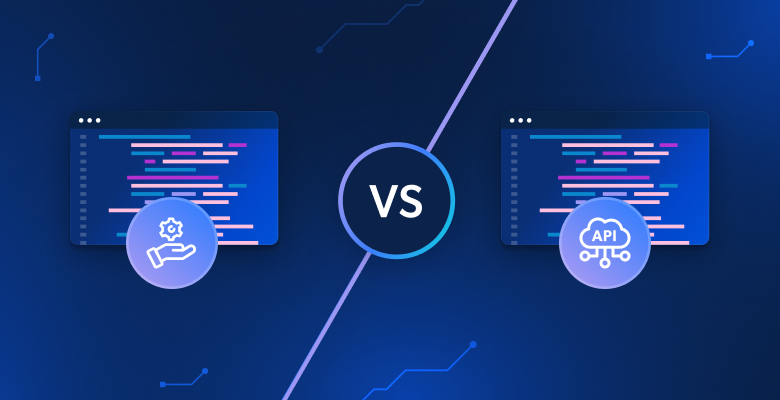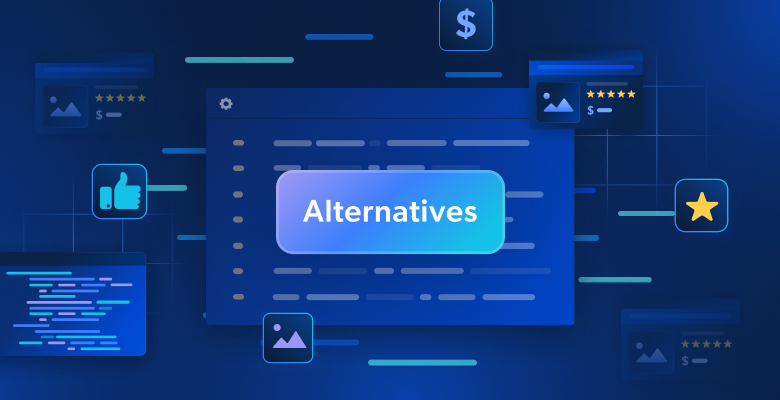Retrieval-Augmented Generation (RAG) and fine-tuning are two vastly different concepts in AI and they serve two very different purposes. RAG allows an LLM to access external information during runtime. Fine-tuning allows the LLM to adjust its internal knowledge for deeper, permanent learning.
By the end of this guide, you’ll be able to answer the following questions.
- What is fine-tuning?
- What is RAG?
- When should you use fine-tuning?
- When should you use RAG?
- How do RAG and fine-tuning complement each other?
What is Fine-Tuning?

Fine-tuning is often considered a part of the actual model training process. You can learn more about how models are trained here. Models first go through a period called “pre-training.” In simple terms, this is when they learn to ingest input and generate output. Once pre-training is finished, the model contains a vast amount of knowledge but isn’t quite optimized to apply it yet.
We usually fine-tune a model using Reinforcement Learning from Human Feedback (RLHF). When fine-tuning, you actually talk to the model to test its output. For instance if a model says “the sky is green”, it needs to be corrected to say “the sky is blue.” When you fine-tune, you judge the machine’s output and reinforce the intended behavior — similar to telling your dog “good boy!” for good behavior or rolling up a newspaper for bad behavior.
When you fine-tune an LLM, you’re preparing it for its actual real-world task. There are two main types of fine-tuning.
- Domain Adaptation: Imagine you want to create a programming expert with a base model like DeepSeek. You’ve got a strong model with a decent foundation, but it’s not a true expert in anything yet. Sure, it understands shell commands and most Python code, but it needs expertise. This is where you’d teach it the finer points of computer science and coding with things like StackOverflow and LeetCode. Once fine-tuning is finished, you’ve got a model that can write code faster and better than any human.
- Task Adaption: Task adaptation is about adapting to the task at hand. In LLMs today, we see this most commonly in actual chats. In early 2026, ChatGPT-4o received some really intense fine-tuning in order to match the sentiment of the person talking to it. In this case, RLHF was used to incentivize the bot to reflect the user’s sentiment. If the user speaks technically, so does GPT. If the user talks about law, GPT speaks in legalese. If the user sounds religious, GPT will flip religious (yes, for real).
Fine-tuning is used to influence the model’s actual decision making and inferences.
What is RAG?

With RAG, no real learning takes place. An AI retrieves extra data for contextual relevance and generates output. Once the output is created, the model returns to its pre-retrieval state. This is a form of zero-shot learning. The model references the information with zero prior context. Then, it uses its pre-training to make inferences and generate output.
When you ask Gemini, “What’s the weather for today?”, it looks up (retrieves) the weather (augments its knowledge) and then tells you (generates) the output.
There are two main types of RAG: Passive and Active. This is best demonstrated in the most recent generation of chat models with stored memories.
- Passive RAG: “Memories” are stored inside a vector database and referenced later on for context. When an LLM knows your name or preferences, this is passive RAG. The information referenced is intended to be static and permanent. The only way to remove “memories” is through manual deletion.
- Active RAG: Think back to our weather example from earlier. Weather changes every day. The model performs an active search (likely through an API) for the weather. Once it’s confident that it understands the weather, it regurgitates it back to you in its own custom “personality.”
RAG pipelines follow this exact workflow: Retrieve the data -> Augment the inference -> Generate the output.
When Should You Fine-Tune?
Fine-tuning is best used when you want to define how your model actually thinks. When you want knowledge and inference to be permanent, you should fine-tune. If your LLM needs to truly understand the data, you should fine-tune it.
If the output produced by your model isn’t quite right, if its thinking process feels even slightly off — you need to fine-tune.
- Tone and Personality: If you’ve got a specific attitude or intonation in mind for your model, fine-tune. This is particularly useful in customized chatbots. When Grok 3 shocked the world with user-defined personalities, this was mainly in part to fine-tuning.
- Edge Cases and Accuracy: When your model runs into issues with edge cases, or fails to represent its training data properly, fine-tuning is needed. This is particularly true for models used in medical diagnosis. A model hallucinating law could lead to court proceedings. A model hallucinating a medical condition is dangerous to the patient.
- Model Size and Cost Reduction: Fine-tuning can significantly reduce the size and operational cost of your model. For instance, the Llama team was able to distill outputs from GPT-4 into GPT-3.5. You can read more about this in their fine-tuning documentation here.
- New Tasks and Abilities: If you wish to add real capability that doesn’t already exist in a pre-trained model, you need to fine-tune it. Imagine you’ve got a model trained to use only English but you need output in Spanish — no amount of prompt engineering or RAG will solve this, you need to fine-tune.
When Should You Use RAG?
RAG is best used for models that already think correctly. If your model produces the correct output after fine-tuning, it’s likely time to add RAG for external data access. Without proper context, models are often rendered useless for many tasks — no matter how smart they are.
Think back to our weather example from earlier. You could have the smartest model on the planet, but without access to live data, your model can’t give you the weather — or any real-time information for that matter. RAG makes sense for the following data needs.
- Real-Time Data: We already covered this with weather. This includes news, financial projections, systems monitoring and other fast moving data streams.
- Research or Library Assistants: Sometimes, people just need to be pointed to the correct resource. When you ask a question with Gemini or Brave Search, you get a direct answer. The model plows through documentation and points you to relevant resources.
- Customer Support: When you need an LLM to man the helpdesk and answer general questions, RAG is fast and effective. AI models already know how to answer questions and read documentation, they just need access to the right content.
- Custom Output: Remember how we mentioned GPT’s user-reflected tone earlier? This isn’t medieval sorcery. The model is referencing stored facts in a database. If OpenAI had to retrain models for each user, it wouldn’t exist.
How To Decide Between Them
If your model needs to think better, you should fine-tune. If your model needs external information, use RAG. In reality, we’re moving toward hybrid systems. Once you release it into the wild, your model needs to think clearly and access the right data. The table below will help you decide when to use each of these for your project.
| Situation | Best Choice | Why? |
|---|---|---|
| Output sounds wrong or unaligned | Fine-Tune | You’re fixing reasoning, tone, or behavior |
| Output is accurate, but lacks details | RAG | You’re missing external or domain-specific facts |
| You need updated facts or real-time data | RAG | Static models can’t learn after training |
| You want strong performance in a new domain | Fine-Tune | You’re adding deep, internalized expertise |
| You need both accuracy and freshness | Both | Fine-tune for logic, RAG for external knowledge |
Bright Data Tools for RAG and Fine-Tuning
Here at Bright Data, we offer robust toolsets to fill both your fine-tuning and RAG needs. Whether you need training datasets or real-time pipelines, our systems have you covered.
Fine-Tuning
- Datasets: Get historical data from all over the internet — updated daily. Whether you’re looking for social media, product listings or even Wikipedia, we’ve got it — ready for training.
- Archive API: Train on multimodal and other sources with petabytes of data added daily.
- Annotation: Speed up your training using flexible annotation service with your choice of AI-assisted and human-supervised labeling.
RAG
- Search API: Perform web searches in real-time using any major search engine with custom parameters like images or shopping.
- Unlocker API: Use our managed proxy services to scrape almost any site on the web.
- Agent Browser: Full scale browser automation for your AI agent.
- MCP Server: Plug your AI agent into our tools with seamless integration.
Conclusion
Fine-tuning teaches your model how to think. RAG gives your model access to external data without retraining or bloating the model. In reality, you should use both — just at different stages in development.
By understanding when and why to use fine-tuning and RAG, you can make informed decisions with your own AI models. Whether you’re creating a domain-specific expert or giving it access to real-time data, our tools are here for you and so are we.
Sign up for a free trial and get started today!






